
Explore Fuchu and Chofu: Treasure Trove of Historical Buildings Close to Tokyo
- Written by: Chiemi Matsumura
- Photos by: Yoshikazu Ishikawa
Today we travel to Fuchu City, as well as the neighboring Chofu City in Tama, both about 15 kilometers west of Shinjuku, Tokyo.
This Tokyo day trip itinerary around Marunouchi was planned by Mr. Tetsu Morita, who was actively involved in the production of the Michelin Green Guide Japan. With his familiarity with Westerners’ tastes, he provides a view of Japan that even Japanese people themselves might not be aware of. Let's dive right in!
- Table of Contents
-
- Starting the day in Chofu
- Tenjin Shopping Street: Popular Japanese manga characters live on in the city where their creator had resided
- Salesio Seminary: Learning about the Venerable Father Cimatti, who was instrumental to the development of education in Japan as a missionary and educator
- Kyodo-no-Mori Museum: Learning about the Darkness Festival, Jomon Era, and old town scenes of Musashino
- Ōkunitama Shrine: Long-time protector of Musashi Province
- Nakakyu Honten and Kura Cafe: Delight your senses with local Fuchū sake!
Starting the day in Chofu

Our meeting point today is Chōfu Station (Keio Line). It's about a 14 minutes ride from Shinjuku by limited express or 17 minutes by semi-limited express.
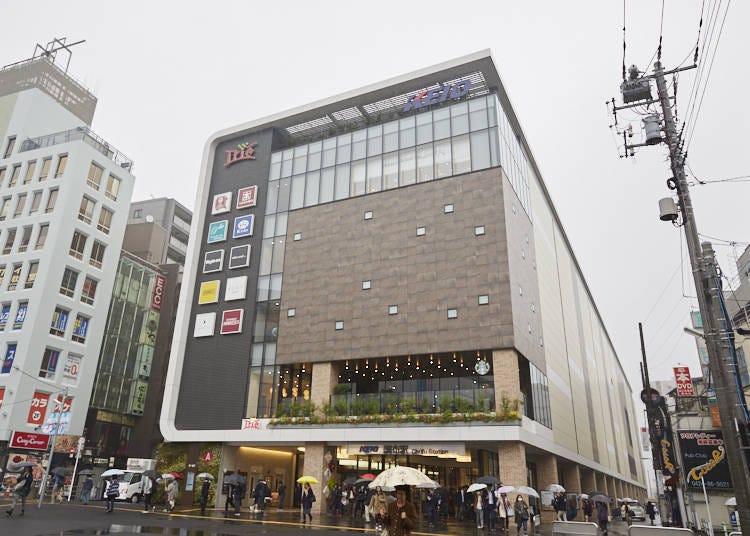
Joining Morita today is Live Japan editor Timothy, who is from New York.
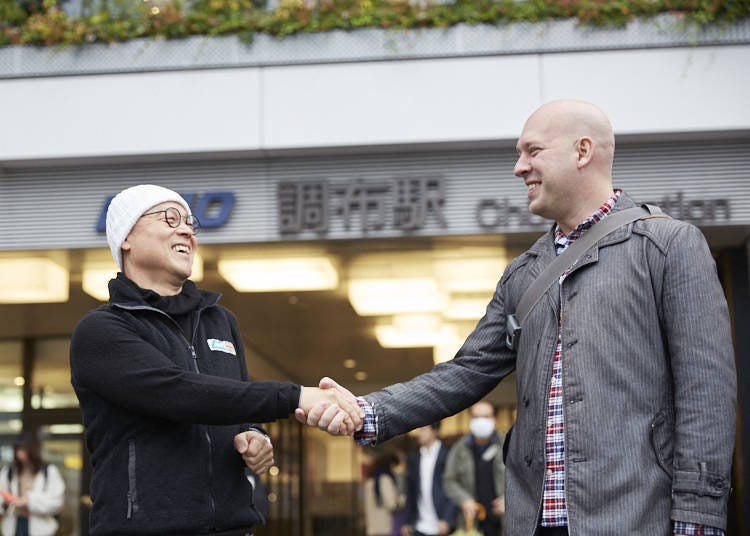
Tenjin Shopping Street: Popular Japanese manga characters live on in the city where their creator had resided
Morita and Timothy decide to start the trip with a stroll around the vicinity of Chōfu Station. Along the way, they encounter artwork of characters from GeGeGe no Kitarō, a popular yokai supernatural monster manga created by Shigeru Mizuki.

Morita commented, "Japan's yokai are kind of intriguing, aren't they? Throughout Japanese history, strange occurrences were often attributed to these mischievous creatures. Renowned manga artist Shigeru Mizuki played a significant role in popularizing yokai by portraying them as manga characters. Having lived in Chōfu for over 50 years, Mizuki's iconic work 'GeGeGe no Kitarō' has left its mark on this town, with characters hiding everywhere. You'll also find plenty of other yokai monuments along Tenjin Shopping Street."
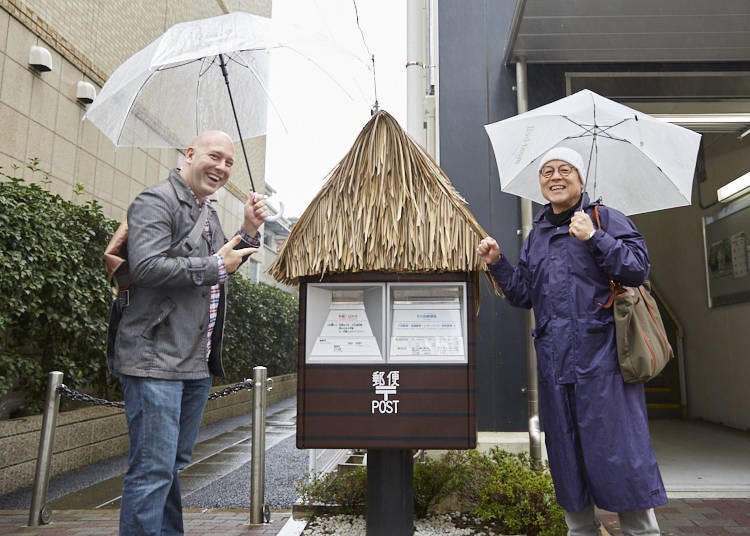
Morita pointed out, "See what I mean? This mailbox is in the shape of a yokai mailbox." He further explained, "If you ever need help for anything, send a letter through the yokai mailbox, and Kitarō will come to your rescue!"
Timothy shared his experience: "When I first came to Japan, I had no idea what yokai referred to." He added, "I think they're something like 'sprites' in Western terms."
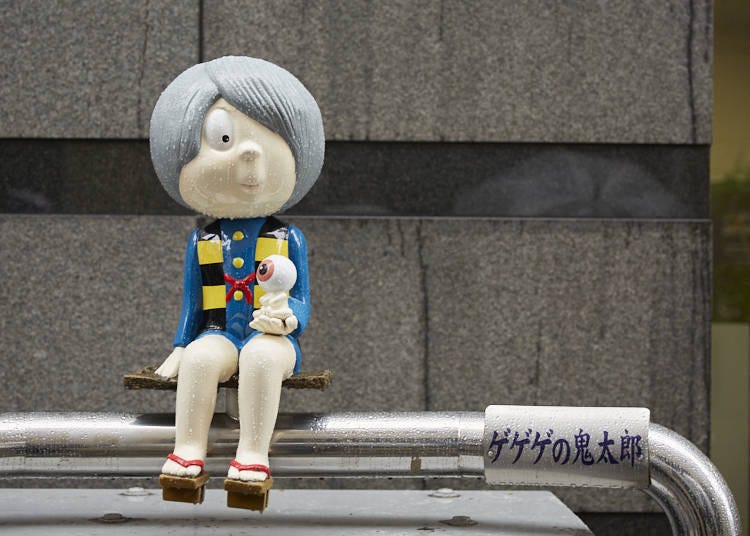
Morita said, "You know those creatures that play a big role in Celtic culture, right? Well, yokai are kind of based on the same idea of animism. I actually think that the way people saw the world during the time when animism was a big thing in Japan has shaped the Japanese identity we know today."

-
Tenjin Shopping Street天神通り商店街
- Address 1 Fuda, Chōfu-shi, 182-0024
Salesio Seminary: Learning about the Venerable Father Cimatti, who was instrumental to the development of education in Japan as a missionary and educator
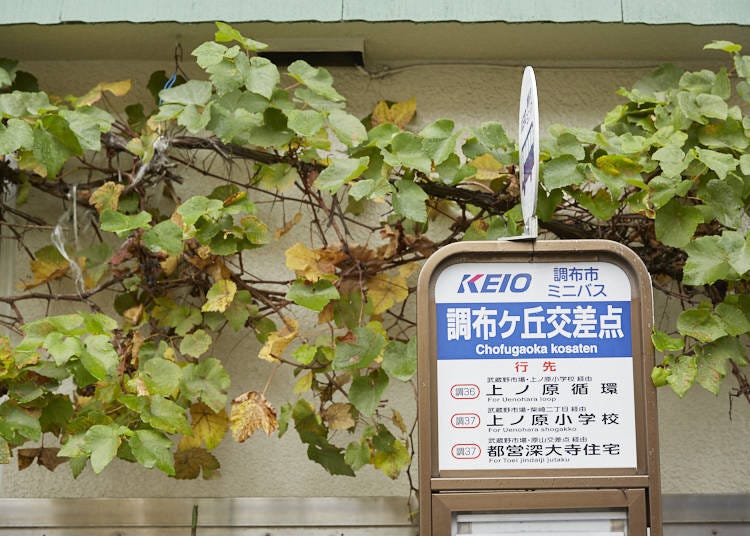

Exiting Tenjin Shopping Street, we arrive at the Chōfugaoka Kōsaten bus stop, where we hop on to a Chōfu City minibus.
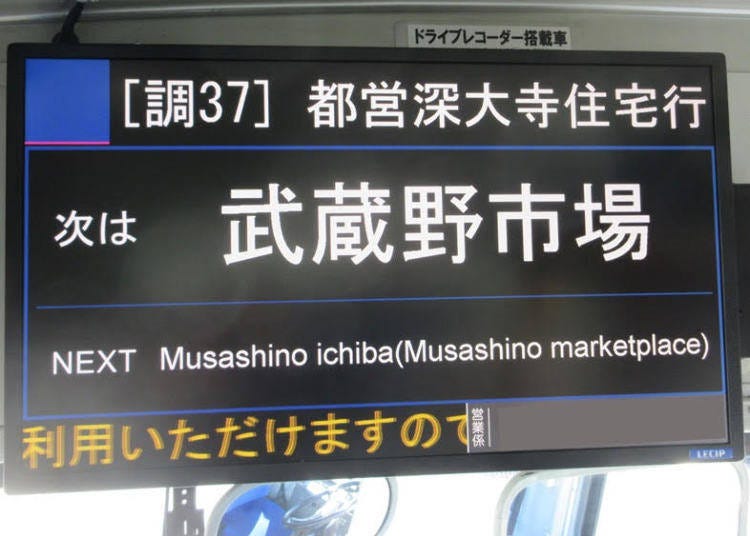
The tourist-friendly bus display shows destination names in English as well. We will be getting off at Musashino Ichiba (Musashino Marketplace) and then continuing on foot to Cimatti Museum, located inside Salesio Seminary.

Morita explained, "The Cimatti Museum serves as a valuable resource center dedicated to Father Vincenzo Cimatti, an Italian missionary from the Catholic Salesians of Don Bosco who arrived in Japan in 1926, during the first year of the Showa era. It's been almost a century since then! Father Cimatti played a crucial role in establishing the Salesians of Don Bosco in Japan. Today, we have the privilege of hearing more from Father Gaetano Compri, the museum's curator."
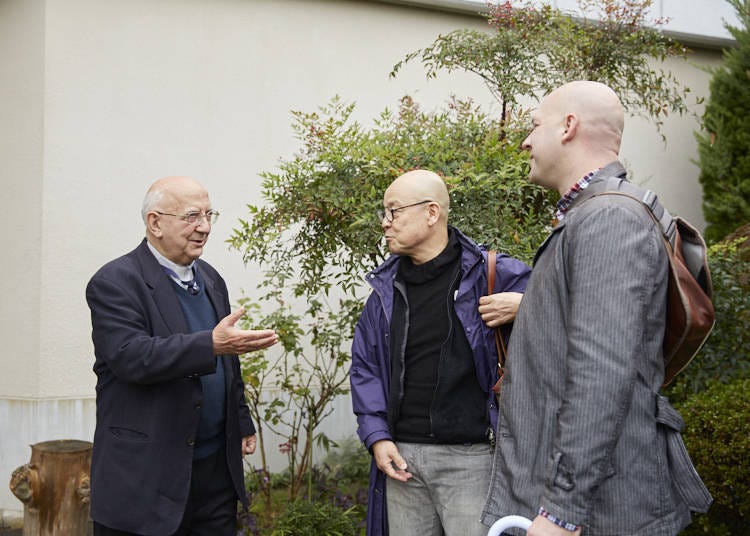
Our guide, Father Compri, arrived in Japan in 1955 and is dedicated to sharing information about Father Cimatti's remarkable accomplishments. He does so from within the Salesio Seminary, which was established by Father Cimatti himself.
Having spent 63 years in Japan, Father Compri's tenure predates Morita's birth! Not only does he speak Japanese fluently, but he also possesses an exceptional sense of humor.
In a room on the first floor of the museum, Father Compri captivates us with fascinating tales of Father Cimatti's achievements and memorable deeds. The tour is certainly off to an excellent start!
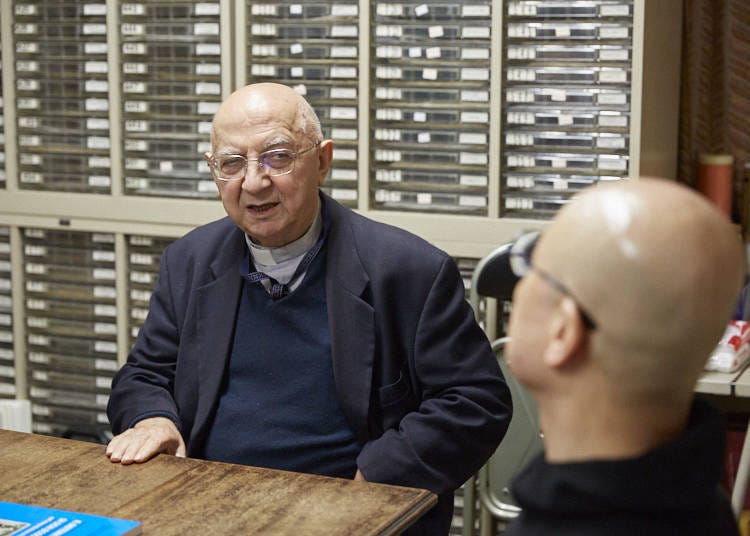
Morita remarked, "Father Cimatti was also a musician, right? His lyric opera, 'Hosokawa Gracia,' was absolutely beautiful."
Father Compri confirmed, "Absolutely. Besides being a missionary, Father Cimatti was a prolific composer, with a repertoire of over 950 musical pieces. As a matter of fact, the cabinets behind me hold the scores for those very compositions we were just discussing."
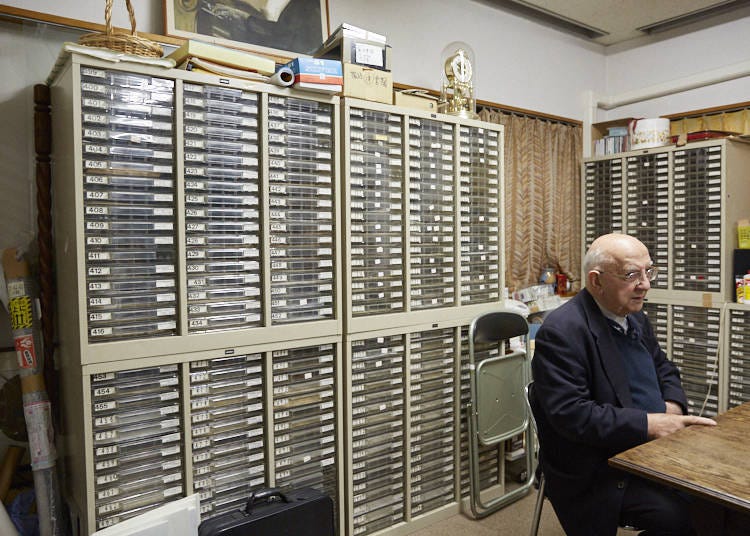
Morita inquired, "Father Cimatti was also recognized as an educator, right? Was he already a teacher in Italy?"
Father Compri responded, "The Salesians, founded by Don Bosco, had a global presence in education. They operated schools and published books in 132 countries worldwide. When the Showa era began in 1926, education for children of commoners was still limited. The Salesians placed great value on practical education to help people earn a living, so they established schools focused on industries and trade. In 1933, they founded the Miyazaki Seminary, now known as Hyūga Gakuin (Hyūga Academy). Similarly, in 1934, the Salesian Polytechnic, formerly known as Tōkyō Ikuei Kōgei Gakkō (Tōkyō Educational Industrial Arts School), was established. These schools aimed to improve the lives not only of Christian children but also of secular children in the country. In fact, Father Cimatti served as the dean of Salesio Seminary until 1962 when he was 83 years old."

Morita: "Father Cimatti came to Japan in 1926 and passed away in 1965 at the age of 86, having spent 15 years living in Chōfu, right?"
Father Compri: "He moved into Chōfu's Salesio Seminary after it was built. Information about his way of life and educational activities are being exhibited on the second floor."

Father Compri pointed out, "Take a look at this stained-glass window. It portrays a young Father Cimatti, only three years old, attentively listening to Don Bosco's preaching while being held by his mother."

Father Compri explained, "To enrich education in Japan, Father Cimatti brought numerous natural science specimens from Italy, including fossils and minerals. Simultaneously, he also sent natural specimens discovered in Japan back to Italy, fostering a reciprocal exchange."
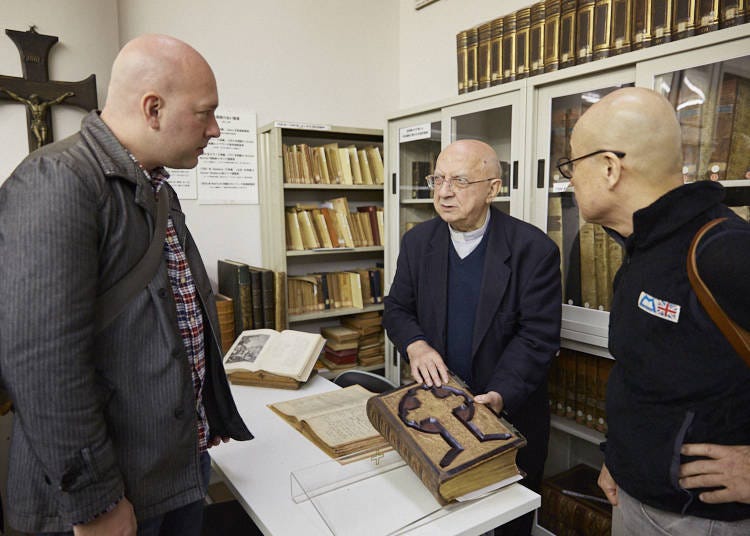
Father Compri shared an interesting fact, saying, "Were you aware that Father Cimatti attended the same school as Mussolini? Mussolini was in a senior grade when Father Cimatti was in his second year. As a result, we have documents donated by Mussolini himself preserved here in the museum."

Father Compri moved over to the collection, saying, "Here we have a remarkable assortment of ancient Bibles. Among them, we possess a Bible dating back to the 1500s, an English Bible published by Oxford in 1717, and a unique sheepskin-bound Bible crafted in Venice in 1734."

Morita commented, "Collecting all these must have been quite costly!"
Father Compri responded, "Before coming to Japan, Father Cimatti served as a teacher in Italy, and many of his former students went on to achieve success in their lives. A significant portion of these items were generously donated by them."
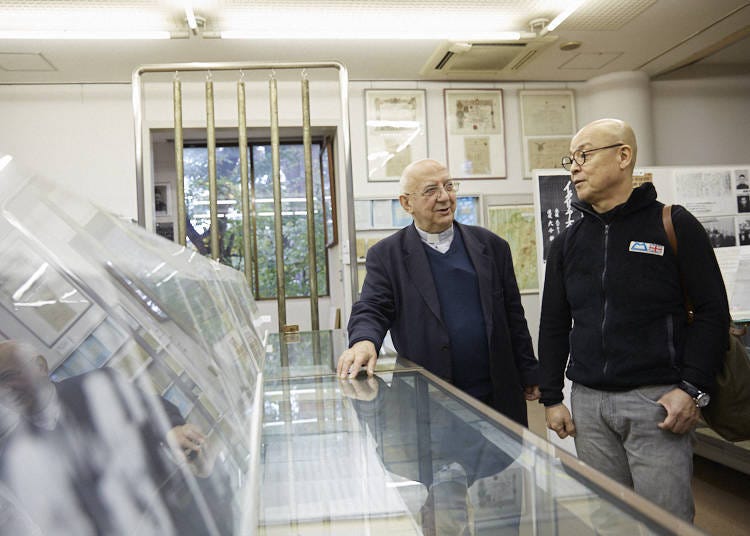
Morita remarked, "So Italians played a role in supporting Japan's education? I believe that's how Japan was able to expand its horizons and modernize so rapidly. And I'm certain that Father Cimatti continued to contribute to Japan's education until his final days."
Father Compri replied, "Father Cimatti passed away in 1965 at the age of 86, and he was recognized as 'The Venerable' for dedicating his life to the Salesians of Don Bosco and advancing education in Japan. We aspire for his further canonization as a 'Saint' and are currently working towards that with the Vatican. Presently, his body rests in a marble coffin within a crypt beneath the Seminary."

Morita expressed gratitude, saying, "Thank you for imparting such valuable knowledge to us today."
Father Compri responded warmly, "You are most welcome! Please do visit us again soon!"

After capturing a photograph together to commemorate the visit, Father Compri resumes his duties. Both Morita and Timothy are profoundly moved by Father Cimatti's devout lifestyle and the extensive collection of invaluable artifacts preserved within the Seminary.
Morita remarked, "We certainly need more time to thoroughly explore all the treasures they have here. In fact, I believe it's crucial for Japanese people to delve into the legacies left behind by the numerous missionaries in Japan, as well as the contributions made by their students towards the advancement of Japanese industries."

-
Chimatti Museumチマッティ資料館
- Address Salesio Seminary 3-21-12 Fujimi-cho, Chōfu-shi, Tokyo 182-0033
-
Nearest Station
Chōfu Station (Keio Line), Musashino Ichiba / Fujimi-cho Jutaku (Bus Stop)
- Phone Number 0424-82-3117
Kyodo-no-Mori Museum: Learning about the Darkness Festival, Jomon Era, and old town scenes of Musashino
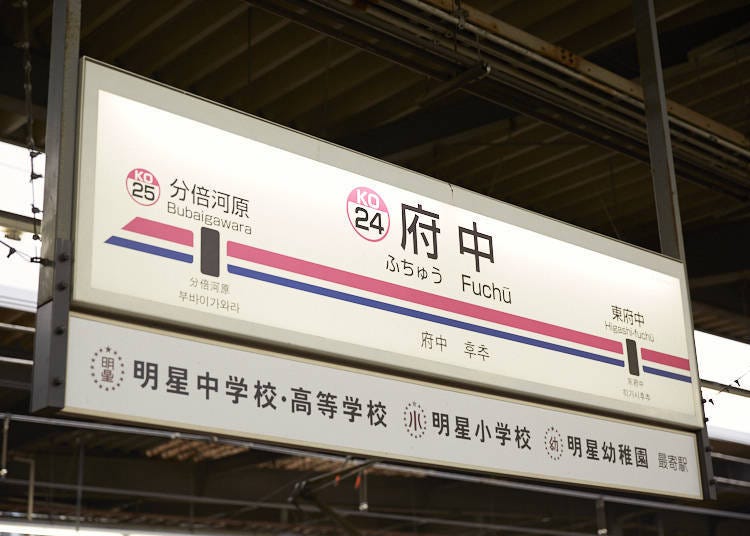
The next destination on their itinerary is the Kyōdo-no-Mori Museum. The group departs from the Cimatti Museum and returns to Chōfu Station (Keio Line). From there, they proceed to Bubaigawara Station to catch a Keio bus heading towards Kyōdo-no-Mori Sports Complex, getting off at the bus stop labeled Kyodo-no-mori-Seimon-Mae. The Kyōdo-no-Mori Museum is situated in this location.
Kyōdo-no-Mori occupies an expansive area of approximately 140,000 square meters (1.5 million square feet). Within its vast premises, visitors can find a museum, planetarium, park, meticulously relocated and restored ancient buildings such as merchant houses, and various other intriguing structures.
The museum's permanent exhibits showcase authentic historical artifacts that shed light on the people and natural environment of Fuchū. Through the use of miniature models, films, and other multimedia displays, visitors can immerse themselves in Fuchū's rich history and distinctive local characteristics.
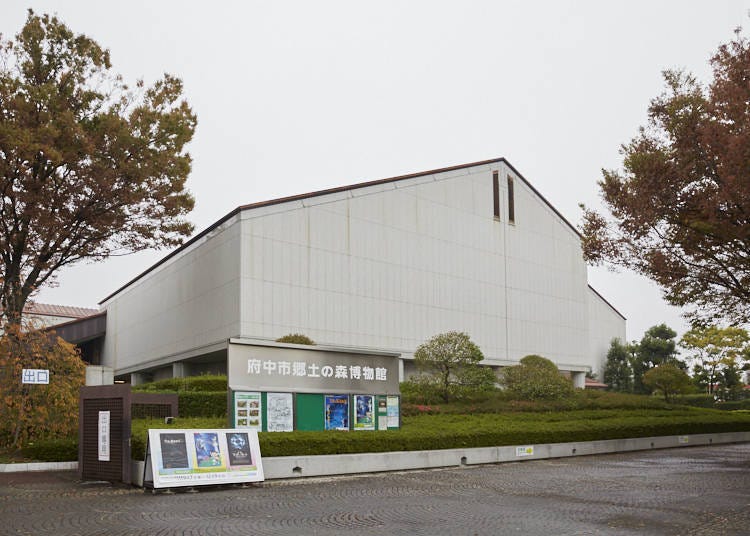
Morita explained, "Kyōdo-no-Mori documented the history of the Musashino region in Japan, where humans had existed since the Stone Age. The exhibits also introduced visitors to various local curiosities, such as the Kurayami Matsuri festival that had been held by Fuchū's Ōkunitama Shrine since the Middle Ages. There were artifacts from the Stone Age and installations related to the ancient kokufu, the former capitals of Japanese provinces during the Yamato Imperial Court era that existed around 700 CE. All the exhibits were displayed in an easily-digestible way for the general public. As fascinating as those artifacts were, I hope you didn't forget to explore the garden and other structures outside, especially the Baikyoan, a tea house that would have been an intriguing experience for most international visitors."
Timothy exclaimed, "From the Stone Age, you say? That's amazing. My country's history only goes back around 250 years, so something so much further back in history is absolutely mind-boggling."
Morita added, "Japan was in the Jōmon period from the middle of the Stone Age, from about 15,000 until about 2,300 years ago, which meant the Jōmon period lasted for about 13,000 years. People lived as hunter-gatherers during that long period of time, and I personally thought that having this historical background was one of the greatest charms of Japan. The people's view of the world formed during that period probably became the foundation of the Japanese belief in animism."

In Kyōdo-no-Mori's "Kurayami Matsuri" festival section, we finally learn more about this festival that has been celebrated in Fuchū since the Middle Ages. This major festival is held at Ōkunitama Shrine every year from 30th April to 6th May.

You'll get to admire a festival flower lantern right at the entrance of the section before proceeding to peer at the large taiko drums and festival floats inside. The huge multi-screen display in the exhibition area will broadcast a video detailing the history and background of the event, as well as the people who make it a reality by their support.

Timothy reflected, "I found it fascinating how the festival begins with participants purifying themselves using the waters of the Shingawa River."
Morita added, "During the festival, there's a ceremonial act where seawater and rice straw are used to polish the goshintai, which is an object believed to house the spirits of deities. In this case, it's a mirror. This ritual symbolizes the significance of salt and rice production, and it may also represent the harmonious relationship between the coastal and mountainous communities. It's quite enjoyable to explore and make these connections based on the available information."

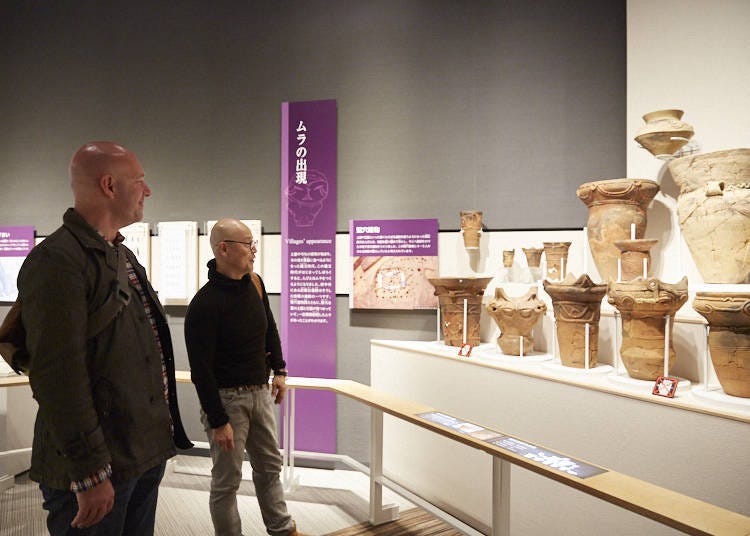
In the "Origin of Villages" section, visitors can view a collection of Paleolithic stone tools and clay artifacts from the Jōmon, Yayoi, and Kofun periods that were unearthed from urban areas. The main attraction is a model showcasing a reconstructed village from the early Jōmon period. This exhibit provides a deeper understanding of the daily activities and lifestyle of the Jōmon people.

Morita explained, "The Jōmon people had abundant resources at their disposal. They could fish in the nearby rivers and sea, and the fertile land provided plentiful vegetation. The forests teemed with deer and boars, offering ample hunting opportunities. This is why the early settlers adopted a hunter-gatherer lifestyle. Later on, individuals from the mainland and Korean Peninsula arrived in Japan, bringing new knowledge and technological advancements in metalwork and rice cultivation. This expanded the practice of rice cultivation during the Yayoi period."

Timothy exclaimed, "Access to water, forests, and open fields, they had everything they needed back then!"
Morita added, "Exactly! The abundance of resources led people to gather and settle in this area, ultimately making it an important location. Eventually, this place was designated as a kokufu."
The "Birth of Ancient Provincial Capitals" section showcases miniature models and videos, providing insights into the kokufu that existed in the Musashi region around 700 CE. Visitors can learn about the historical significance of these ancient provincial capitals through engaging displays.
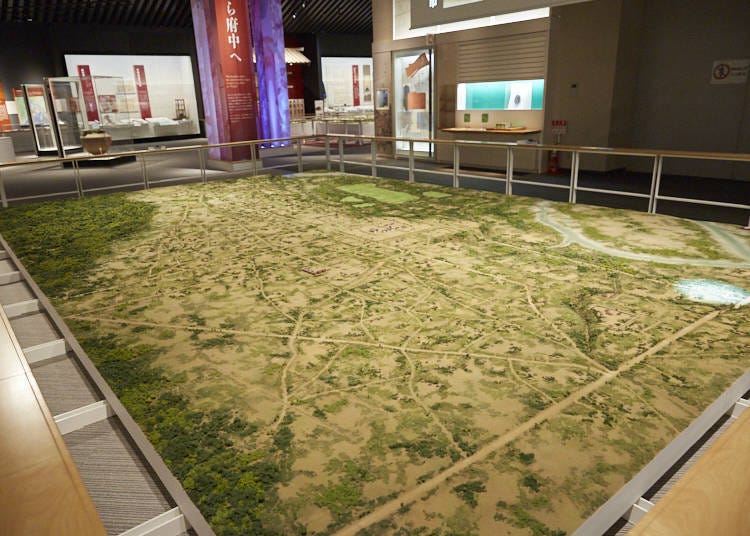
Morita continued, "As agriculture took hold in Japan, the wealth disparity between different communities became more evident. After some conflicts, local ruling classes emerged. These influential local rulers formed an alliance known as the Yamato Imperial Court, consolidating their power over the Nara Basin. This laid the foundation for a unified rule of Japan with the Emperor at its center. The Yamato dynasty extended its influence to other regions within the Japanese archipelago and designated certain key locations as provincial capitals, known as kokufu. Within these kokufu, they established government offices called kokuga. The kokuga for Musashi Province was located right here in Fuchū. The remains of this building can still be found near the Ōkunitama Shrine in Fuchū City."
Timothy asked, "And this miniature model is a replica of that kokuga, right?"
Morita replied, "Yes, indeed. I believe it would be challenging to find a more detailed and accurate miniature model depicting a place in 8th-century Japan during the Nara period than the one we have here. In fact, I highly recommend visiting just to see this remarkable model."
Timothy commented, "The short film showcasing the lifestyle of commoners during that era is quite intriguing as well."


Morita explained, "In the 'Inn Town Festivities' section, you'll find another impressive miniature model. This one depicts Fuchū during the late Edo period when it thrived as an inn town along the Kōshū Kaidō, a major highway connecting different provinces in Japan. Even the kōsatsuba, the town message boards, are replicated in a scaled-down size of 65%. Interestingly, one of the common messages displayed during this time period is a prohibition on Christianity."

After exploring the different sections of the museum, we venture outside and explore the relocated buildings on the premises, which date back to the late Edo period through to the Meiji, Taisei, and early Showa periods. These buildings were carefully relocated here for preservation. Notable among them are the Former Tanaka House and Former Shimada House of Fuchū-shuku, which were once bustling retail stores during their prime.

Inside the Former Tanaka House is a tea house called Baikyoan where teicha, the matcha tea used in tea ceremonies, is being served in an informal setting. For 400 yen, you'll get to enjoy some refreshing matcha and yōkan jelly dessert.

Timothy remarked, "The fact that the museum is housed in a historical Japanese-style building adds to its charm."
Morita agreed, saying, "It's truly remarkable how the museum, garden, and ancient buildings were relocated and preserved in this manner. It's a shame we couldn't enjoy a leisurely stroll in the garden due to the rain today, but there's no denying that the rainy ambiance adds a unique atmosphere to the entire place."
Timothy responded, "Definitely. Being here, you truly get a sense of being immersed in Japan's rich cultural heritage."


-
Kyōdo-no-Mori Fuchū City Museum府中市郷土の森博物館
- Address 6-32 Minamicho, Fuchū-shi, Tokyo 183-0026
-
Nearest Station
Bubaigawara Station (Keio Line), Kyodo-no-mori-Seimon-Mae (Bus Stop)
- Phone Number 042-368-7921
Ōkunitama Shrine: Long-time protector of Musashi Province
After being refreshed by the matcha and yōkan jelly, Morita and Timothy head toward Ōkunitama Shrine.
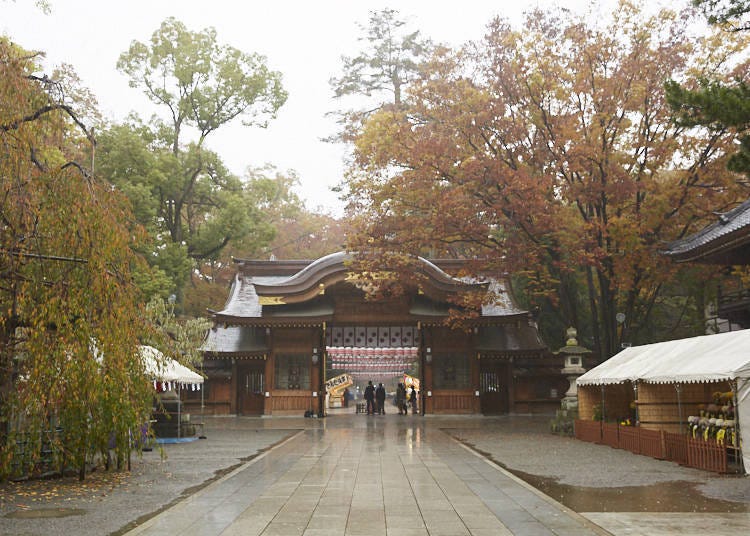
This shrine serves as the central shrine for the Musashi Province, enshrining Ōkunitama-no-Ōkami, the guardian deity of the province. It was constructed on the site where the kokufu of Musashi Province once stood, as showcased in the "Birth of Ancient Provincial Capitals" section within the Kyōdo-no-Mori Museum. Even in the present day, the shrine remains highly revered by the local residents of Fuchū, sought after for protection against misfortune and as the host of the renowned Kurayami Matsuri festival.
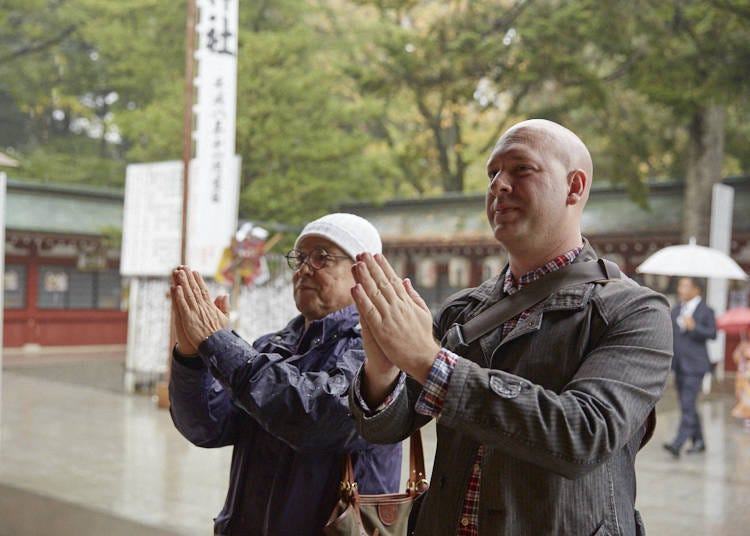
Morita explained, "In addition to the main Ōkunitama-no-Ōkami shrine, the complex also houses several other shrines. Among them are the Tatsumi Shrine, dedicated to the goddess Benzaiten; the Tōshōgū Shrine, honoring Tokugawa Ieyasu, the founder of the Tokugawa shogunate; the Sumiyoshi Shrine, enshrining the sea deity Izanagi-no-Mikoto; the Ōwashi Shrine, dedicated to the god of battles, Ōtori-no-Ōkami; and the Miyanome Shrine, devoted to Ame-no-Uzume-no-Mikoto, the goddess associated with safe childbirth and entertainment, to name just a few."
Timothy remarked, "That's quite a number of gods."
Morita continued, "Among the notable shrines is the Sui Shrine, where Mizuha-Nome-no-Mikoto, the goddess of water, is enshrined. Another interesting one is the Matsuo Shrine, dedicated to Ōyamakui-no-Mikoto, the god associated with the development of alcoholic beverages. Fuchū is known for its pristine water, which is ideal for making Japanese sake. In fact, that's why Suntory, a major beverage company in Japan, has a beer factory located right here in Fuchū!"

Morita asked, "Shall we go take a look at the kōsatsuba?"
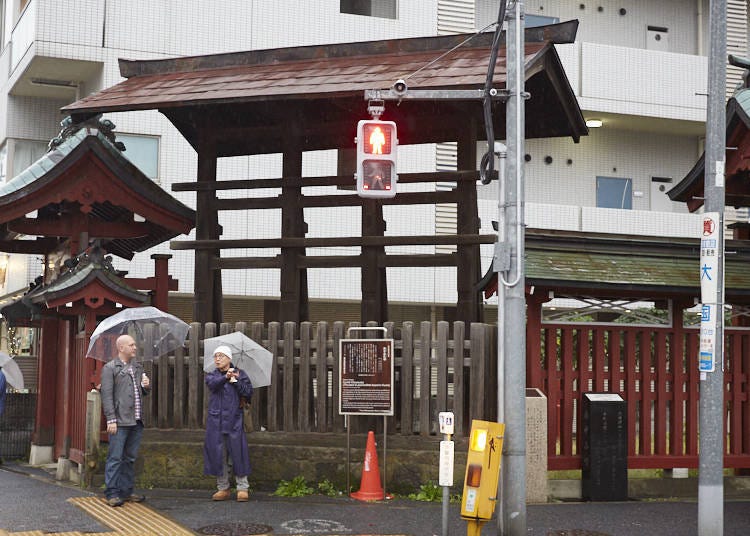
Timothy reflected, "So this is what a real kōsatsuba looks like, huh? This area must have been the bustling center of activities for Fuchū in the past."
Morita nodded, adding, "During the time of the Tokugawa Bakufu (1603 to 1867 CE), the government would post official notices here, and people would gather around to read them."
-
Ōkunitama Shrine大國魂神社(おおくにたまじんじゃ)
- Address 3-1 Miya-machi, Fuchū-shi, Tokyo 183-0023
-
Nearest Station
Fuchū Station (Keio Line)
- Phone Number 042-362-2130
Nakakyu Honten and Kura Cafe: Delight your senses with local Fuchū sake!
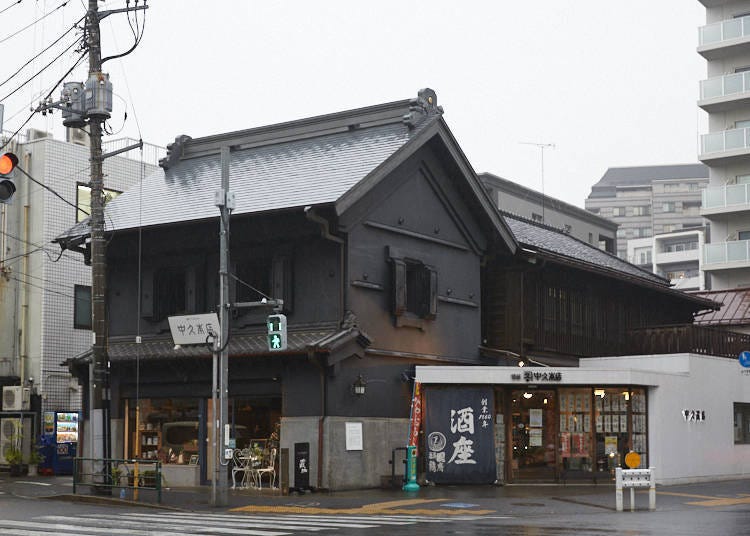
After departing from Ōkunitama Shrine, Morita and Timothy enter Nakakyū Honten, a traditional Japanese sake shop located conveniently across from the kōsatsuba.
Nakakyū Honten is a long-standing sake brewery that was established in 1860. Among their repertoire of sake, the "Kouzuru" brand has gained popularity as a local favorite in Fuchū.
In the past, the brewing process would actually take place within the shop itself. However, they have since relocated the brewing operations to another site, transforming this space into a dedicated retail area for customers to enjoy and purchase their sake products.

The shop's historical ambiance is a result of its original purpose as a private residence. The robust pillars provide solid support for the abundant shelves filled with neatly arranged sake bottles.
Timothy expresses his enthusiasm, saying, "I have a great fondness for Japanese sake, and seeing all these local bottles here is truly exhilarating!"

Seeing the sparkle in Timothy's eyes, the store clerk invites him to sample the products.
Timothy accepts with gusto and tries out sake after sake, until his face grows flushed...

Adjacent to Nakakyū Honten is Kura Cafe, an inviting establishment where visitors can savor a range of typical café offerings alongside sake from Nakakyū Honten, if desired. After a full day of exploring Chōfu and Fuchū, Morita decides that this would be an ideal spot to take a well-deserved rest.
The café offers a specialized menu that showcases Japanese sake and beverages derived from sake lees. Additionally, there is a regular menu featuring coffee and other café-style beverages.
One of the highlights is the delicately flavored homemade cheesecake, expertly baked by the café owner. This delectable treat pairs exceptionally well with both Japanese sake and sake lees latte, with a secret ingredient of brandy incorporated into the recipe.
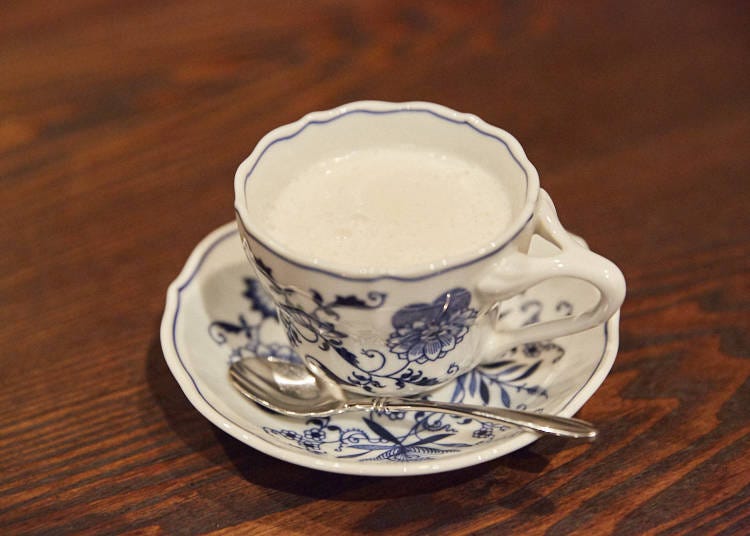

Morita remarked, "The sake lees latte is truly unique, isn't it? It's like a creamier variation of amazake (sweet sake). And as for the combination of Japanese sake and cheesecake, I believe they complement each other splendidly."
Timothy agreed, saying, "Absolutely! Indulging in Japanese sake within the cozy ambiance of this charming café is a delightful experience."
Morita smiled, "Finishing our day with sake in Fuchū, a place with a rich connection to sake brewing, is the perfect ending to our leisurely stroll. Cheers to a memorable day!"
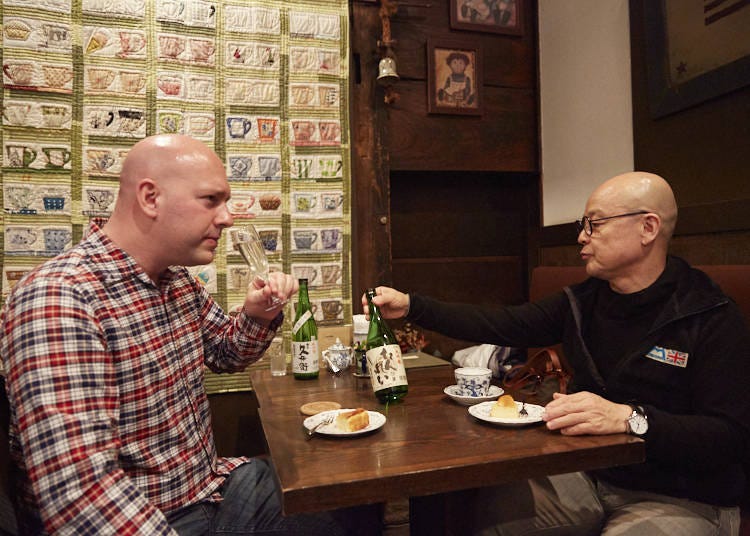
Before heading home, Timothy happily purchases a bottle of Kouzuru Tanrei as a souvenir.
Thus, our tour of Fuchū, the thriving former capital city of the ancient Musashi Province, as well as Chōfu, comes to an end. It has been a truly enriching experience, spanning from the Stone Age to the Meiji period and beyond. We have gained valuable insights into the historical transitions that shaped this land and witnessed firsthand the impact of foreign cultures on the development of Japan.
-
Nakakyū Honten中久本店
- Address 4-2-1 Miyanishicho, Fuchū-shi, Tokyo, 183-0022
-
Nearest Station
Fuchū Station (Keio Line)
- Phone Number 042-362-2117
A film writer and web director who spends her days shuttling between home, movie theaters (screening rooms), interview locations, and bars. She worked as an editor for a movie information site for about eight years starting in 2001. In 2009, she became a freelancer. Besides writing, she also takes on various web direction projects.
Born in 1981 in Yokosuka, Kanagawa, he is a freelance photographer specializing in portrait photography for advertisements and magazines.
- Area
- Category
*Prices and options mentioned are subject to change.
*Unless stated otherwise, all prices include tax.
Popular Tours & Activitiess
Recommended places for you
-

New Seibu L00 Series Launching in 2026! What to See Along the Tokyo-Area Golden Route
by: Guest Contributor
-

Strawberries, Style, and Tokyo’s Coolest Neighborhood: Winter Afternoon Tea in Kichijoji
by: Guest Contributor
-

Simply Oishii Wagashi School Discover Japanese Culture Through Wagashi: A Hands-On Experience!
by: Guest Contributor
-
Ad

Preserving the Beauty of World Heritage Site Shirakawa-go for the Future Through Responsible Travel
-

A Travel Game Changer! Go Hands-Free Between Tokyo and Kyoto with LUGGAGE EXPRESS by JTB and JR Tokai
by: Guest Contributor
-

How to Get Don Quijote's Exclusive 2025-2026 Winter Gift (+Tax-Free Savings)
Inspiration for Accommodations
-

Enjoy Mt. Fuji from the Comfort of Your Room! Recommended Ryokan with Mt. Fuji View
-

Stay Near the Cherry Blossoms! Hotels for Cherry Blossom Viewing in Tokyo
-

Family-Friendly Hotels with Free Shuttle to Disneyland: Convenient Access for a Magical Stay
-

Top Ranked Hakone Hotels with Mt. Fuji View: Enjoy Stunning Scenery from Your Private Space
-

Convenient Tokyo Hotels with Airport Shuttle: Ideal for Families and Heavy Luggage
-

Stunning Tokyo Tower View Hotels: Enjoy Spectacular Scenery from Your Private Space
-

Convenient Asakusa Hotels with Kitchens: Ideal for Extended Family Visits
-

Experience Luxury: Hakone's 10 Best Five-Star Accommodations
-

Enjoy Mt. Fuji Autumn Leaves! Top Hotels Near the Popular Autumn Leaves Corridor
-

Experience Hakone Fall Foliage from Your Room with Stunning Views
-

Exploring Tokyo: 4 Must-Visit Spots around Tokyo Station
-

6 Surprisingly Cheap Things in Japan
-

4 Best Historic Neighborhoods to Experience Old Tokyo
-

JR Edition: Visit all of Tokyo in one Day with the Tokyo Metropolitan District Pass!
-

Perfect Tokyo Day Trip Itinerary: Visiting Tokyo’s Best Spots for First-Timers!
-

Explore a historic samurai district while wearing kimono in Kagoshima, southern Japan
- #best ramen tokyo
- #what to buy in ameyoko
- #what to bring to japan
- #new years in tokyo
- #best izakaya shinjuku
- #things to do tokyo
- #japanese nail trends
- #what to do in odaiba
- #onsen tattoo friendly tokyo
- #daiso
- #best sushi ginza
- #japanese convenience store snacks
- #best yakiniku shibuya
- #japanese fashion culture
- #best japanese soft drinks




















